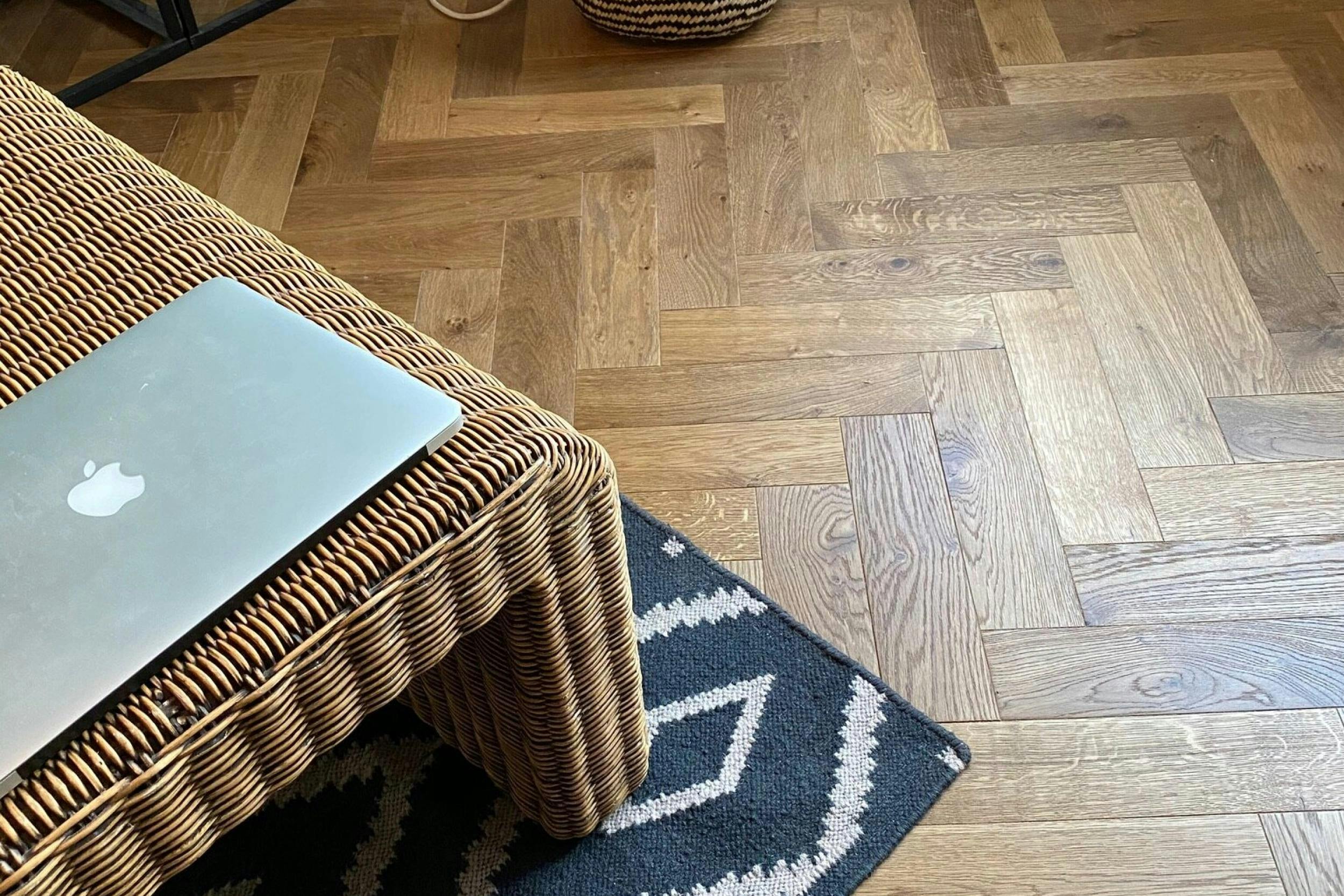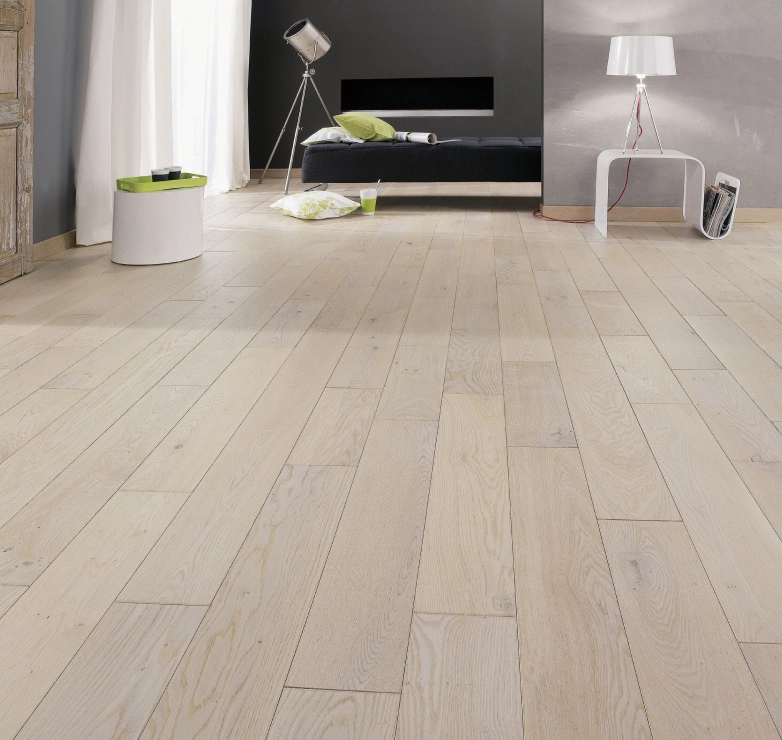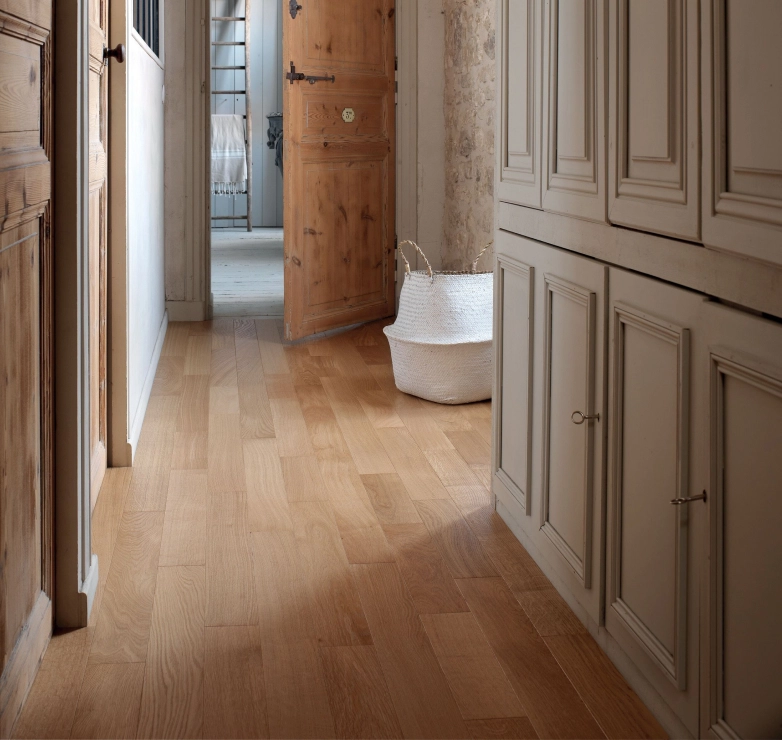Knots
Knots occur naturally in wood where a branch grows out of the main trunk and are often a circular or oval shape with a dark outline.
Although they are often looked at as imperfections in the wood, they enhance the natural look and add character to the flooring which is great if you are going for that country-style, shabby chic aesthetic.
Lacquered
A lacquered wood flooring is one that has been coated with a resin, similar to varnish, leaving it with a glossy finish.
Learn more about finishes, including lacquer, here
Laminate
Laminate wood flooring is a multi-layer synthetic flooring product. The top layer is a printed image used to give it the appearance of wood flooring that has been coated with a clear protective layer. The core of the product is made from HDF.
Parquet
Parquet is when the planks of wood flooring have been laid in a regular or geometric pattern, the most common being chevron and herringbone.
Learn more about parquet flooring here
Rustic
Rustic refers to the appearance of the wood as a result of its condition or the way that it has been prepared.
This type of wood has enhanced imperfections, natural charm and is often reclaimed or reused lending itself well to country-style homes and cabins.
Sanding
This is the process of using an abrasive tool on the wood as part of refinishing old or damaged flooring. It removes the top layer of wood and creates a smooth surface which leaves the floor looking as good as new.
Learn more about the refinishing process and how sanding works here
Sheen Level
Sheen level refers to how shiny your flooring looks and has four levels - matte (being the least shiny), satin, semi-gloss and glossy (being the most shiny).
The sheen level will determine how easy it is to maintain your wood floors, how much additional light the room receives and it can even heighten your floors’ durability.
Learn more about the different sheen levels here
Skirting
Skirting is the wooden board that runs across the bottom of the walls around a room to hide the space where the wall meets the floor and help make the two look more fluid.
It’s mostly a decorative addition to rooms much like architrave.
Staining
This is the process of finishing wood floors by applying an oil to the top layer. This effectively stains the wood so that it matches the colour and feel of a particular space.
It’s purely for aesthetic purposes and offers little to no additional protection to the wood.
Subfloor
The subfloor acts as the foundation for the underlay and surface levels of flooring and is usually made from wood or concrete.
It provides a stable and level surface for which the new wood flooring can be installed quickly and easily.
T-Molding
A wood molding used to join two wood floors, or floors of the same height in adjoining rooms. It’s usually fitted in doorways and is not to be confused with beading.
Tongue and Groove
This is a simple method of wood flooring installation that requires you to fit the protruding edge (the tongue) of one plank of wood into a groove on the adjacent plank.
It’s the traditional alternative to the click fitting system.
Underlay
Underlay is a thin layer of cushioning that sits beneath your wood flooring creating a barrier between the subfloor and the wood planks.
It’s made from sponge rubber, foam, felt or recycled plastic and it helps to provide insulation against sound, moisture and heat.
Unfinished
This refers to wood flooring that has not had any oil, lacquer or brushing applied to it; hence, it has no finish.
This type of wood is usually selected when the buyer wants to choose their own oil to stain the flooring once it has been installed.
Wear Layer
The wear layer is the surface layer of engineered or laminate wood flooring. It usually provides the durability, scratch and stain resistance as well as helping to maintain the appearance of your wood flooring for longer.
Whitewashed
This is when wood flooring has been sanded down and stained in a white colour to make the room look brighter and help enhance homes with a shabby-chic, beachy aesthetic.




